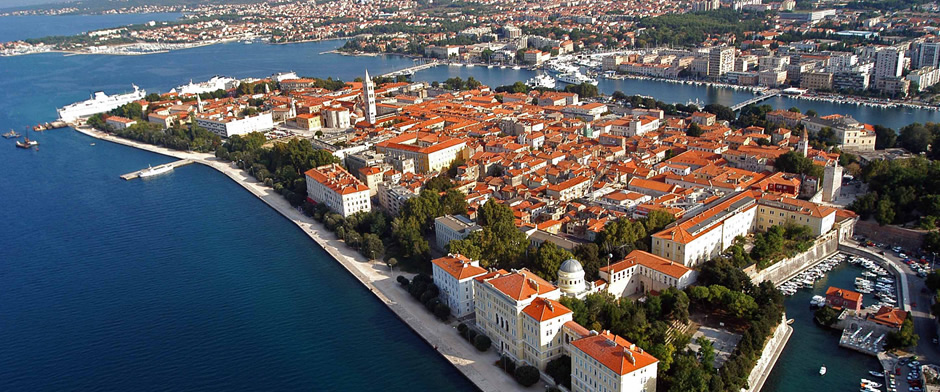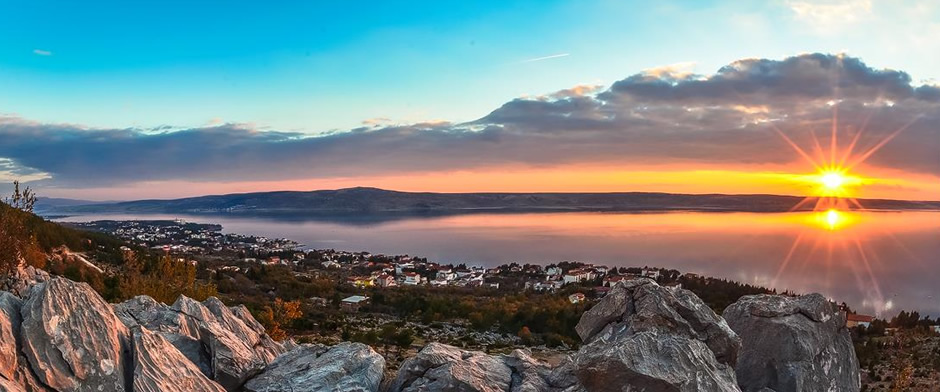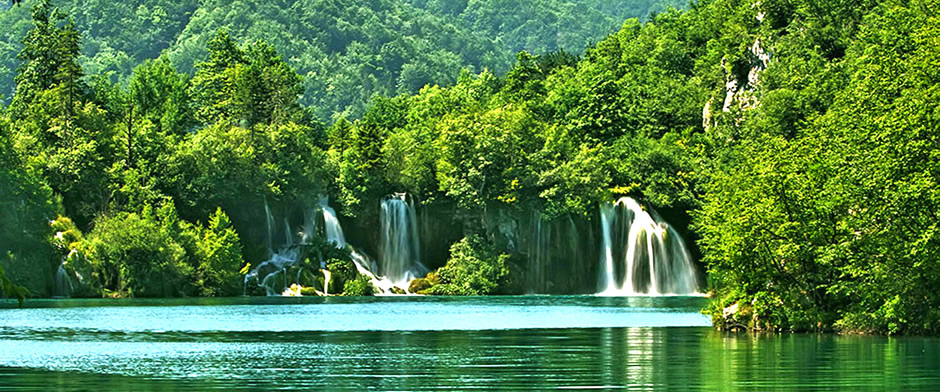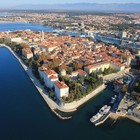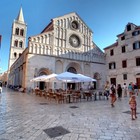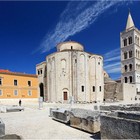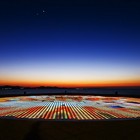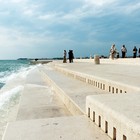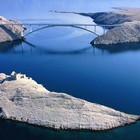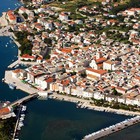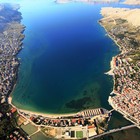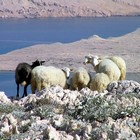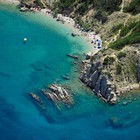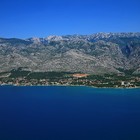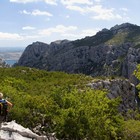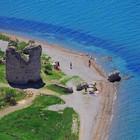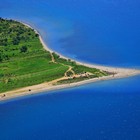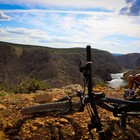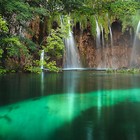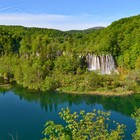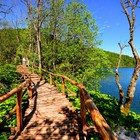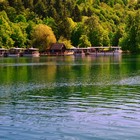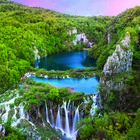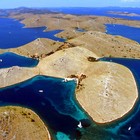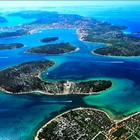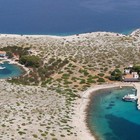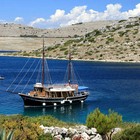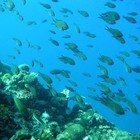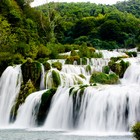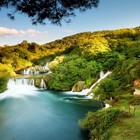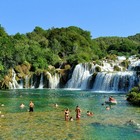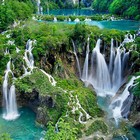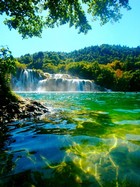EXCURSIONS
" We offer you a wide choice of short and all day excursions to the most beautiful places and national parks in Croatia. You can make your stay much more interesting and educational if you use the organized excursion which will be a wonderful addition to your holiday memories "
ZADAR
Zadar is a city with an extraordinary 3000 year history and extremely valuable cultural heritage. It is located in the very heart of the Adriatic, in the juncture of history and all the things a modern traveler requires. It is one of the most popular tourist destinations in Croatia which the London Times named the “center of entertainment on the Adriatic”, while Guardian named it “the new Croatian capital of cool”. The turbulent history of this city has left many scars as well as valuable cultural heritage. The landmarks of this city are its historical monuments and cultural heritage. Many churches and cultural monuments remain from various time periods which reflect the artistry of construction of all periods. Of the most popular monuments we emphasize the church of St. Donat (symbol of the city and the most famous monumental building in Croatia from the early Medieval period – 9th century), cathedral of St. Srošije (three-nave Romanic building, also the largest church in Croatia, built in two stages in the 12th and 13th centuries), church of St. Šime (early Christian church which houses the powers of St. Šime – Zadar’s most popular saint), church and monastery of St. Mary (female Benedictine monastery), church and monastery of St. Francis (oldest Dalmatian Gothic church, built during the lifetime of St. Francis Asiški), city walls fortresses and gates (many gates are made in the walls of the city; of the original 30, only eight remain today), church of St. Krševan ( three-nave Roman basilica with three richly decorated semicircular apses), Grisogono Vovo, Rector’s palace and the Regent’s palace.
The city of Zadar is an easily accessible destination which you can reach by land, sea and air and is directly connected to the other large Croatian cities. It has a developed coast line whose islands and untouched nature attract numerous seafarers. The islands located around Zadar are ideal for excursions so we recommend visiting the Ist, Molat, Iž, Rava, Olib and other islands. The Zadar archipelago also has three nature parks (Telašćica, Sjeverni Velebit and Vransko Jezero) and five national parks (Paklenica, Plitvice, Kornati, Krka and Velebit).
The city is full of modern architectural accomplishments such as the world’s first sea organ and the urban installation “Salute to the Sun”. The sea organs are an instrument on the coast whose music is created by the movements of the sea. It is a place where human ideas and skills with the energy of the sea and waves bond, a place for conversation and pondering with the constant sound of the “orchestra of nature”. “Salute to the Sun” is an installation composed of multi layered glass panes, underneath which solar modules create a symbolic communication with natural light. This installation is connected with the sea organs whose sound is converted into a game of light, performing on the Zadar promenade after sunset. Other than these two modern attractions, Zadar offers many others, such as the National Square, Five Wells Square, silver and gold of the city, Forum, Foša, Museum of Antique Glass, Kalelarga, promenade, Arsenal and many others.
ISLAND OF PAG
The city of Pag is the center of Pag Island, which is known for its magnificent lace and wonderful sheep’s cheese. It has developed into the center of an interesting modern center with towers and fortresses which maintain the rich heritage of the past. The city is rich in cultural monuments, due to its turbulent history. Those who enjoy historical heritage can visit the Congregational church of the Assumption, duke’s court (dates to the 15th century, served as center of the island and city rule), church of St. George (patron saint of Pag, part of the northeastern city walls), church of St. Francis, St. Margarita monastery, salt magazines (unique monuments of Pag architecture on an international level). You can also visit the old city which is one kilometer away from the city center and is part of the city center since the 1970’s, holding numerous historical monuments. There are parts of a Franciscan monastery, Roman church of St. Mary, as well as the remains of ancient monuments. Today’s church of St. Mary was built on the foundations of an early Croatian Basilica from the 8th century, while the monastery well and statue of the Mother of the old town make it unique. For those who prefer an active vacation, Pag has a lot to offer. There is an Olympic center in the Lokunje region with tennis courts and fields for numerous other sports. The Pag Bay is lined with 20km of pebble and sand beaches which consist of three city beaches and the following: Golija, Kozlinjak, Dubrava, Bosana, Tartanovo, Sveti Marko, Sveta Marija, Filino and Ručica Metajna.
STARIGRAD PAKLENICA
Starigrad Paklenica is a village and a small port on the coast of the Velebit channel. The town is built on the foundations of the ancient city Argiyruntuma. It is also a starting point for the national park Paklenica. Starigrad is where the mountains and the sea become one and is therefore interesting to swimmers as well as hikers. Miles of sandy beaches make it suitable for families with children, while mountain Velebit and NP Paklenica are regularly visited by cavers and lovers of hiking and free climbing. Besides hiking, free climbing and recreational sports, enthusiasts can also enjoy caving, kayaking and canoeing as well as rafting on the river Zrmanja. Visitors have at their disposal a number of tennis courts, sports fields and various equipment for water sports. Walkers and collectors of herbs can take wonderful walks on the slopes of the national park.
NATIONAL PARK PLITVICE LAKES
The Plitvice Lakes are the most famous national park in Croatia, as well as in Europe, and are included into the most beautiful notabilities of the world. The first thing you will notice when you see the Plitvice lakes for the first time are the luxury and abundance of water, the sounds coming from the waterfalls, the power and force of nature that exude awe. The Plitvice Lakes consist of 16 lakes, composed in a cascade manner, interconnected by waterfalls, while a kilometre long network of wooden bridges and woody paths enables a close contact between visitors and waterfalls and lakes. The nature creating waterfalls on its own, forests, plants of the national park, as well as the living world inside the lakes and beside them, are the reason for the thrill experienced by thousands of people every year. The damns between the lakes, over which amazing waterfalls and slopes fall, are created in a special, natural, ongoing way for thousands of years now. As a result of sedimentation of calcium carbonate, natural barriers are created on the bottom of the lake, as well as on top of submersed objects, growing in height and width, thus creating spectacular waterfalls. Great diversity and variety of natural shapes have led to the fact that the National park the Plitvice lakes has been included into the UNESCO's "World heritage list". The famous movie "Winnetou" was filmed at Plitvice, as well. The beauties of the Park manage a union with the harmony of nature, countless resort and field activities, long walks in nature and recreational programmes for all ages. At the Plitvice lakes, each season tells its own story with the help of colours, sounds, murmur of the waterfalls, odours, quiet and life.
NATIONAL PARK THE KORNATI ISLANDS
Stretching along the central part of the Croatian Adriatic, are the Kornati islands. With their immense natural beauty, diverse coastlines, and preserved marine ecosystem, most of the Kornati islands were declared a National park in 1980. National park Kornati sizes about 220 km2 which consists of 89 islands, islets and reefs. National park Kornati was named after the biggest island in the group - Kornat. Vegetation on the islands is minimal, giving the islands a bald look, however, nature still thrives with plant life on the rocks. Crystal clear water, and uncover the all kinds of reefs, shellfish and many species of fish below the surface.
The Kornati islands were populated in prehistoric times; findings of stone hatchets at the bottom of the hill Pasinka on the islands of Kornati confirm the stated. The Kornati islands were a frequent target for invaders and thieves, from the Romans and the Venetians to the aristocracy from Zadar. Although today the Kornati islands are only populated during the summer months, old field and fishing houses spread out in secluded inlets on the Kornati islands, give away the presence of their owners. There is no electricity or fresh water springs on the islands.
The Kornati islands are a real heaven for yachtsmen, divers and all those who enjoy the solitude of untouched and the magnificence of nature. There are 20 restaurants on the Kornati islands which serve fish specialities. You can get to the Kornati islands by boat (if you own or you rent), or by organised boat excursions offered by tourist agencies. For more information you can visit the public bureau „Nacionalni Park Kornati “in Murter. The park is located about seven nautical miles from the island of Murter.
NP KRKA
River Krka is a phenomenon, while making its way to the Adriatic sea; it forms many lakes, falls and water currents. Originating from the base of the Dinara Mountains, by the town of Knin; because of the natural beauty and geological characteristics around the Krka River was declared a National park in 1985. The park encompass' and area of 109 km2 and follows along the river Krka about 2 km down river from Knin to Skradin.
The most impressive, and visited waterfalls are Skradinski buk and Roški falls. Roški falls are very accessible and can be visited year round. 650m of river create 12 water falls, with a total height of 27m. On the left side of the river Krka there are mills (used for processing wheat and corn) some of which are still in use today.
From Roški falls the river once again turns into an elongated lake named Visovac. There is a little islet in the middle of the lake and it is the name of this islet - Visovac; where the lake got its name from. On the islet there is a church and Franciscan monastery which add secrecy to the lake and islet. The first settlers on the island were Augustinians (nomads) in the 14th century and it was them who built the church and monastery. In the year 1440 Franciscans arrive from Bosnia, who were chased away by the Turkish invasion. They were able to stay there until today, bringing with them their valuable collection of books, art, and even 630 Turkish documents.
Skradinski buk is considered one of the most beautiful cliff water falls in Europe. You can see them with a walk through a Forrest on a wooden path and bridges. The river Krka is rich with various species of fish, 10 of which are endemic. The great number of birds in National park Krka is also considered a haven and one of the most valuable areas in Europe.

